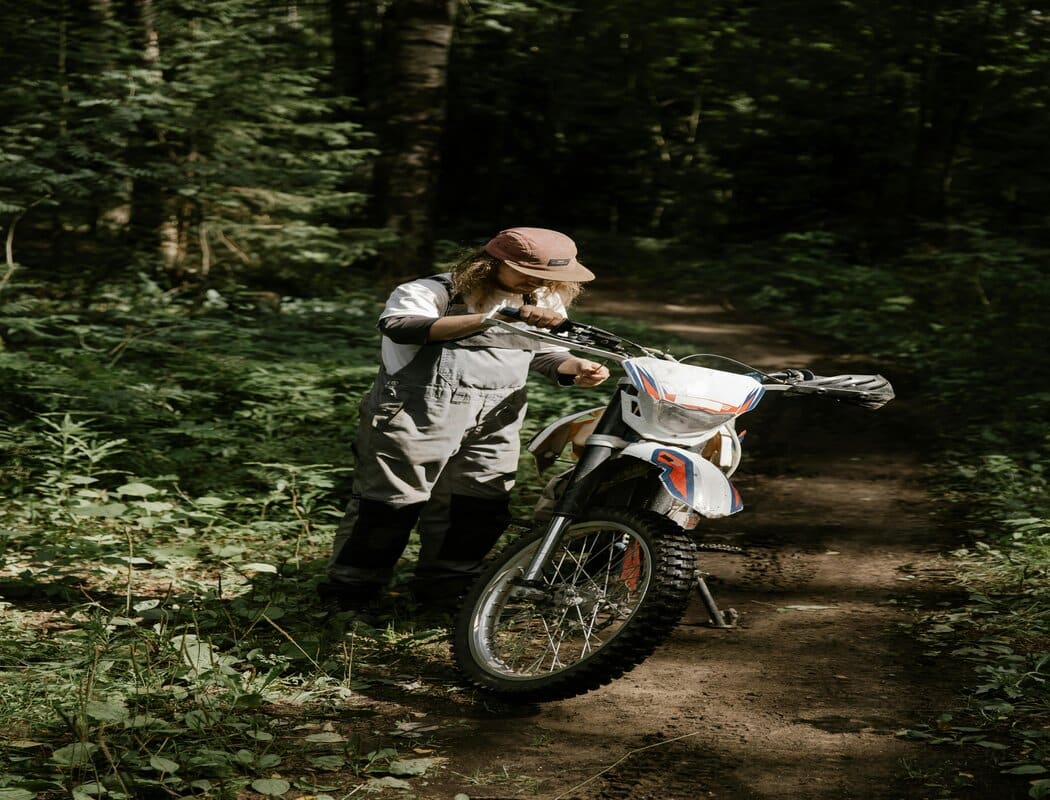If you’re passionate about dirt biking, you know your machine isn’t just a vehicle—it’s an extension of yourself. And just as you’d take pride in your own appearance, making sure your dirt bike is spick and span says a lot about your commitment to performance and longevity. One of the most critical, yet often overlooked areas of dirt bike maintenance is keeping your plastics clean.
The state of your bike’s plastics can reflect its overall care. Not to mention, a proper washing routine can extend the life of your bodywork and keep your bike looking showroom-ready. This comprehensive guide is designed for dirt bike enthusiasts and novices alike who are serious about maintaining their ride’s pristine condition.
Understanding Dirt Bike Plastics
Before jumping into the cleaning process, it’s important to understand what you’re dealing with when it comes to dirt bike plastics.
Types of Plastics Used in Dirt Bikes
The most common types of plastic you’ll encounter are ABS, polycarbonate, and polypropylene. Each has its own set of properties that make it ideal for certain bike parts, and therefore require specific cleaning methods. ABS plastics, for instance, are hard and scratch-resistant, found in fenders and side panels. Polycarbonate, known for its high-impact resistance, is usually used in front number plates and are often treated for UV protection. Polypropylene, used for larger bodywork components, is cost-effective and lightweight but can be more prone to stains and discoloration.
Common Issues Caused by Dirty Plastics
Dirty plastics aren’t just an eyesore; they can lead to more severe problems. Mud and grime can accumulate in the nooks and crannies of your bike, causing premature wear and corrosion. Oil and grease stains can also eat away at the plastic’s surface, potentially leading to brittle or weakened bodywork.
Essential Tools and Materials
Having the right cleaning gear is half the battle won. Here’s what you’ll need:
- Mild Detergent: Avoid harsh cleaners that can damage plastic. A mild detergent or bike-specific cleaner is best.
- Soft Bristled Brush: An old toothbrush or specific brush for plastic can help you get into the crevices without scratching the surface.
- Clean Cloths and Sponge: Quality microfiber cloths and a non-abrasive sponge are perfect for wiping down and drying your plastics.
- Plastic Restorer (Optional): If your plastics are already showing signs of fading, a restorer can help rejuvenate the color.
- Gloves and Eye Protection: Always protect your hands and eyes when working with cleaners and solvents.
Impact of Cleaning Plastics
Maintaining clean plastics on a dirt bike extends beyond mere cosmetic appeal; it significantly impacts the bike’s overall performance and longevity. Clean plastics are less likely to harbor corrosive substances that can eat away at the material, leading to cracks and breaks that compromise the bike’s structural integrity.
Furthermore, a bike with well-maintained plastics experiences less drag, which can subtly improve performance during rides. Clean surfaces are also easier to inspect, making it simpler to spot and address issues before they escalate into costly repairs. Ultimately, investing time in keeping dirt bike plastics clean is an investment in the bike’s health and your enjoyment of the sport.
Safety Precautions to Consider
- Work in a Well-Ventilated Area: If you’re using a cleaning product, ensure there’s plenty of fresh air to avoid breathing vapors.
- Cool Down Your Bike: Before washing, make sure your bike is at a temperature where you can comfortably touch the metal and plastics.
- Avoid High-Pressure Washers: High pressure can force water into areas it shouldn’t be, potentially damaging the bike or leading to electrical issues.
- Be Mindful of Waste: Dirt and chemicals you wash off your bike should not be left to drain into the environment.
Step-by-Step Cleaning Process
Pre-Cleaning Inspection
Inspect your bike before washing. This is the time to note any damaged or worn plastic parts that may need extra care or attention.
Washing Techniques
- Start with a rinse to remove any loose dirt.
- Apply the cleaning solution to the plastics and allow it to sit for a few minutes, but do not allow it to dry.
- Use the soft bristle brush to work on heavily soiled areas. Remember, gentle is the key; you’re not scrubbing grout.
- Rinse off the cleaning solution thoroughly.
Stain Removal Tips
For tough stains, you may need to use a stronger cleaner designed for the specific contaminant. Always spot test new products on an inconspicuous area to check for adverse reactions.
Drying Your Dirt Bike
- Use a clean, dry microfiber cloth to dry off your bike.
- For hard-to-reach areas, compressed air can be a gentle way to help in the drying process.
Tips for Maintaining Clean Plastics on Your Dirt Bike
Understanding the importance of clean plastics on your dirt bike’s performance and longevity, here are some practical tips to ensure your bike’s plastics remain in prime condition:
- Regular Checks: Frequently examine your bike’s plastics for any dirt, stains, or signs of wear. Early detection of potential issues can prevent more severe damage.
- Immediate Cleaning: After a ride, especially in muddy or dusty conditions, make it a practice to clean your bike as soon as possible. Allowing debris to sit can make it harder to clean later.
- Protective Coatings: Consider using a UV protective spray on your plastics after cleaning. This can help protect against fading and makes future cleaning easier by preventing dirt from adhering strongly to the surface.
- Gentle Cleaning Products: Stick to mild detergents and avoid abrasive materials that can scratch or dull the plastic. Bike-specific cleaners are formulated to clean effectively without damaging surfaces.
- Use Proper Techniques: Avoid aggressive scrubbing, which can create micro-scratches and dull the surface over time. Gentle, circular motions with a soft cloth or sponge are most effective.
- Keep It Dry: Always thoroughly dry your plastics after cleaning to avoid water spots. Using a microfiber cloth can absorb water without scratching the surface.
- Cover When Not in Use: If storing your bike for an extended period, or even just between rides, use a breathable cover to protect it from dust, debris, and harmful UV rays.
By following these tips, you can maintain the aesthetic appeal and integrity of your dirt bike’s plastics, ensuring it looks great and performs well for years to come.
Troubleshooting and FAQs
Here, we’ll address some common cleaning challenges.
Addressing Common Cleaning Challenges
- Faded Plastics: If a simple wash isn’t bringing back the color, use a plastic restorer to revitalize the surface.
- Water Spots: These are common if you didn’t dry the bike properly and can be removed by rewashing and drying thoroughly.
Answering Frequently Asked Questions
How often should I clean my dirt bike plastics?
Ideally, after every ride, but at the very least, once a month.
Can I use household cleaners?
We strongly advise against using household cleaners as they can be too harsh for plastics, and may not rinse off completely.
Conclusion
A dirt bike is a significant investment and keeping its plastics clean is an investment in its future. Beyond aesthetic appeal, a well-maintained bike performs better and lasts longer, saving you money and ensuring you have more fun out on the trail. Remember, the key to cleaning dirt bike plastics like a pro is regular upkeep, the right materials, and a methodical approach. With this guide, you’re well on your way to showcasing a machine that reflects your passion and dedication to the sport. Wear your dirt, not your bike!



